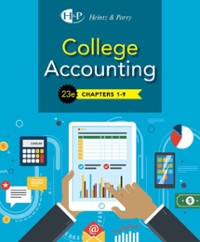| Question 1.1. (TCO A) You have been hired by a Regional CPA firm to perform audits on their largest clients. Explain what Standards of Field work you would be required to adhere to and why. (Points : 19) Question 2.2. (TCO B) When a CPA performs an Audit the Client is always looking to receive a CLEAN OPINION or an Unqualified Opinion. Explain what your client must do for a CPA to justify that Unqualified Opinion? (Points : 19) Question 3.3. (TCO C) Kent, CPA is a staff auditor participating in the audit engagement of Fort, Inc. Based upon each of the circumstances below, indicate whether or not Kents actions impair his independence. Explain your response for each situation: During the period of the professional engagement, Fort gives Kent tickets to a football game worth $30 they are great seats. Kent owns stock in a corporation that Forts 401(k) plan also invests in. These interests are immaterial to Kent. (Points : 19) Question 4.4. (TCO D) There are four major sources of legal liability for a CPA. In addition there are defenses to such liability. List the sources of legal liability and provide at least one defense to each liability you state. (Points : 19) Question 5.5. (TCO F) Describe the six related audit transaction objects and indicate whether they pertain solely to Sarbanes Oxley or non-publicly traded companies. (Points : 19) Page 3 Question 1.1. (TCO E) A Remington School District employee has been charged with theft and forgery for allegedly stealing approximately $72,000 in district funds. Mary Blaner, 51, was charged in District Court with one count of second-degree felony theft and five counts of third-degree felony forgery. She is the second school district employee to be formally charged with stealing from the district. Both individuals were charged in separate and apparently unrelated cases. Blaner, who was the district's payroll clerk, allegedly arranged electronic direct deposits of funds for nonexistent employees that then went to her, according to the police. Blaner was a trusted employee who had worked at the district for over 10 years. (Note: she just went through a divorce and has 4 children to support. She needs money for her children and a new car and had plans to pay the money back later). "Over the course of the last 15 months, she was able to allegedly siphon funds out of their (the district's) account into her account, and she allegedly set up fictitious employees," School district officials became suspicious when they had trouble balancing the district's account. After an internal audit, school officials came across payroll listings for workers that did not have any matching Social Security numbers. Another school district employee, Cindy Heap, who formerly worked as an elementary school secretary, earlier was charged with theft and 11 counts of forgery in a different case, according to Gary Searle, deputy county attorney. Heap allegedly took just under $90,000 in district funds, Searle said. Heap, 32, resigned from her job. (1) What factors allowed these frauds to occur? (2) What do you think the school district should do in the future to prevent fraud from occurring in the future? (3) What responsibility do you feel the current school external auditor has to detect this fraud? (4) How have the three elements of the Fraud Triangle enabled Mary to commit this fraud? (Points : 30) Question 2.2. (TCO G) The 1136 Tenants v. Max Rothenberg and Company case (Chapter 5) established the need for an Engagement Letter at the start of an audit. Discuss at least six of the matters that should be specified in an engagement letter. Explain why this upfront Engagement Letter is so important. (Points : 30) Question 3.3. (TCO H) One objective of audit of a water utility for a small city is to determine whether all customers are being billed. Select the best direction of testing from the options below and explain why you selected that option. (a) Meter Department records to the sales register. (b) Sales Register to the meter department records. (c) Accounts receivable ledger to the sales register. (d) Sales Register to the Accounts receivable ledger (Points : 30) Question 4.4. (TCO I) Accounts Receivable - For each of the following, please explain if an auditors review of the clients sales cutoff would detect these problems: (a) Would excessive goods returned for credit be detected by a sales cut-off test why or why not? (b) Would unrecorded sales discounts be detected by a sales cut-off test why or why not? (c) Lapping of year-end accounts receivable be detected by a sales cut-off test why or why not? (d) Inflated sales for the year could it be detected by a sales-cut-off test why or why not? (Points : 30) Question 5.5. (TCO J) (1) Identify the Processing Controls associated with a Computerized System and identify the types of tests to be performed. (2) Identify the issues which an E-Commerce System presents for an auditor (Points:30) | 





